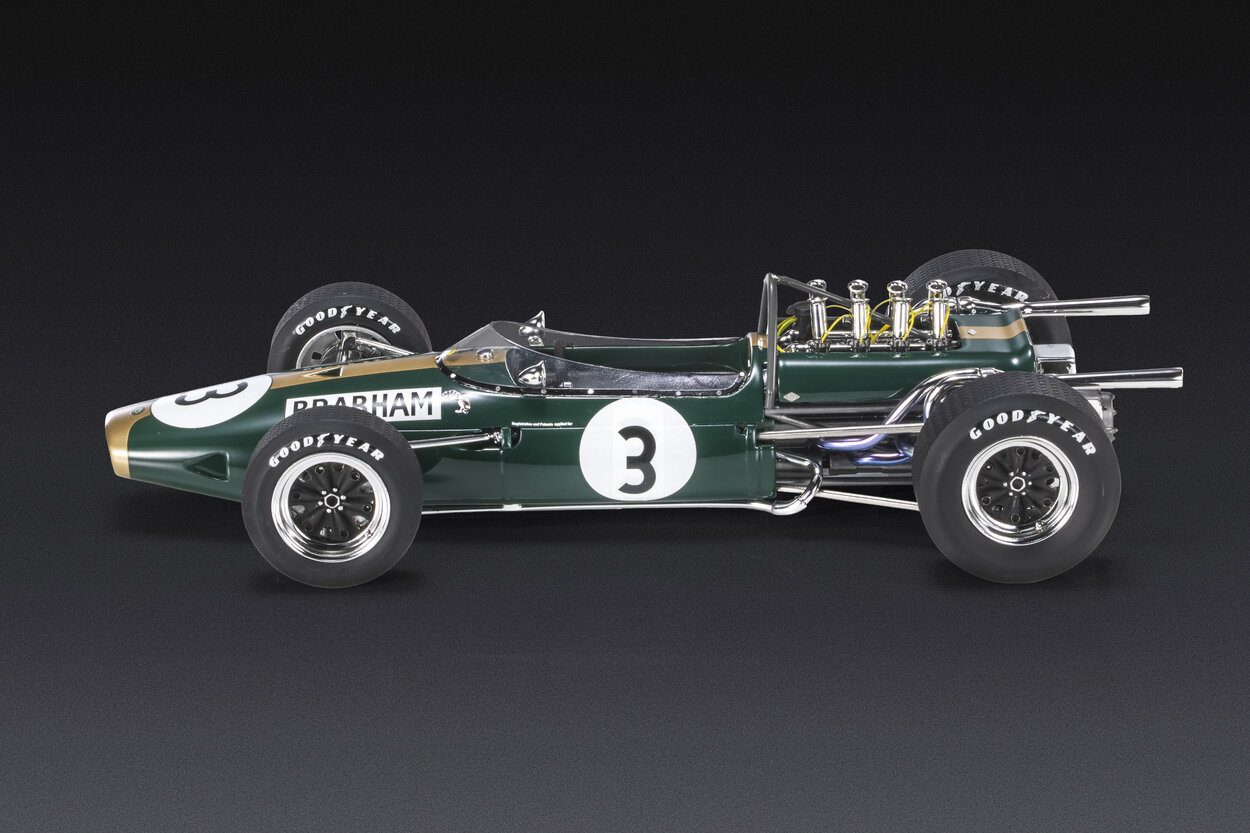Brabham BT19
What Jack Brabham achieves at the wheel of the Brabham BT19 is a result unparalleled in Formula 1 history: winning the Drivers’ World Championship title – and the BT19 will also clinch the Constructors’ title – driving a car bearing his own name. After winning the two titles in 1959 and 1960 with Cooper, Brabham secures his third world crown by driving a car of his own construction.
The BT19 project is the work of Ron Tauranac, the Anglo-Australian engineer, Brabham’s partner since 1962, responsible for all the team’s projects until the sale of the company to Bernie Ecclestone in the early 1970s.

Drivers:
Jack Brabham: Third personal world title and the first for the team and the company bearing his name. This is the haul that Black Jack brings home at the end of the 1966 season, during which he steers the BT19 to victory in four consecutive races, the Grand Prix of France, Britain, the Netherlands, and Germany. These victories are enough to create a significant lead in the championship standings. Brabham will also contest the last two championship races with the BT20 model. Behind the wheel of the BT19, the 1966 world champion will also compete in two races in the following season, securing second place in Zandvoort.
Denny Hulme: The New Zealand driver competes in only one race at the wheel of the Brabham BT19, the 1967 Belgian Grand Prix, in which he only sets the fourteenth fastest time in qualifying and retires on the fourteenth of the 28 laps of the tortuous Spa circuit due to engine failure. In 1966, he never drives this model.
Our model cars:

The BT19 is born in 1965 to accommodate the Coventry-Climax 1.5-liter engine. Changes in regulations prompt Brabham to postpone its use until the 1966 season, leading Tauranac to partly reconsider the project, adopting a Repco-Brabham 8-cylinder engine with a three-liter displacement for a power output of 315 HP. The engine is made of lightweight alloy while the cylinder liners are cast iron. The cylinder heads feature two valves per cylinder. The distribution is single overhead camshaft with chain drive. The chassis is of tubular type.
Partly ahead of its time, for the design of the BT19, as with all his other cars from 1963 onwards, Tauranac and Brabham utilize the wind tunnel of the Motor Industry Research Association. Brabham credits Tauranac’s meticulous attention to aerodynamic details for the lowered nose and the upwardly directed rear lip of the engine cover.

